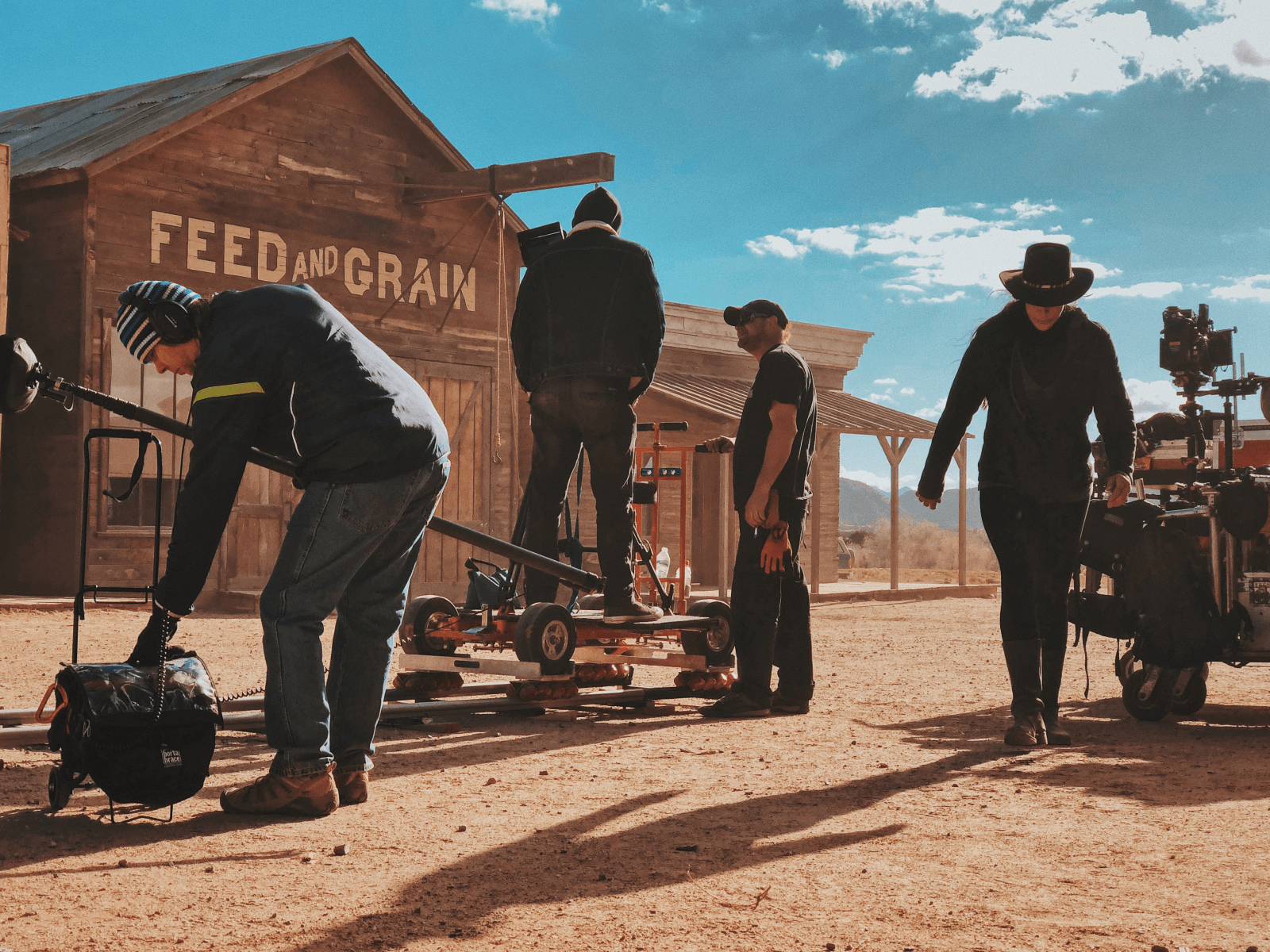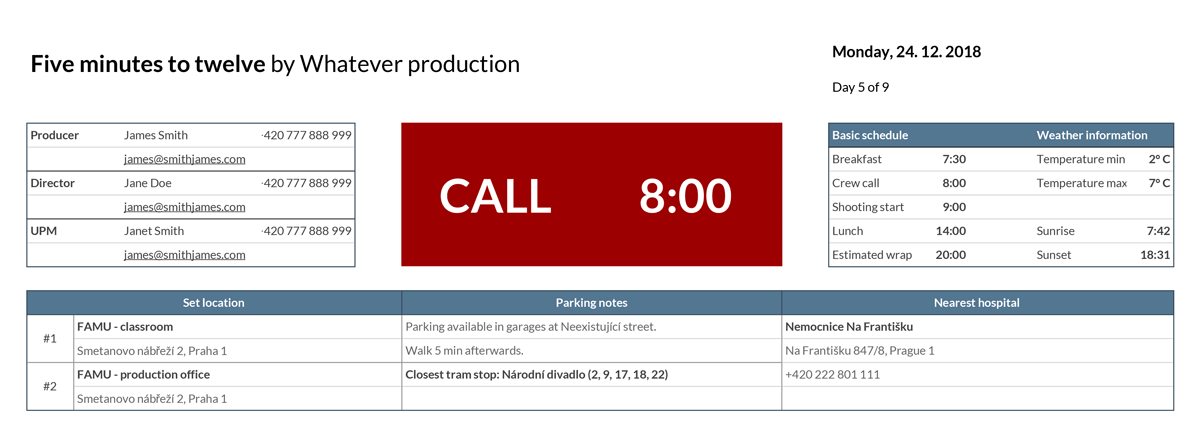Call sheets are essential for filmmaking. It is basically a piece of paper (nowadays piece of PDF) that says what, where and when are you shooting given day. No reason to make this complicated and long, let's dive into it right now.
Header
In the header you can see the title, the production, day out of days (also known as DOOD), most important contacts (usually the producer, director and UPM - Unit Production Manager), general call time and basic schedule (breakfast, lunch, estimated wrap, etc). Also what weather can you expect, location address with parking notes and address of the nearest hospital (with ER, because you never know what can happen during the day).
Schedule
Next section is a schedule with more detailed information. In each row you should have a scene, scene number, short description, characters involved (coded in number which you can find in a section that comes right after this one), if it is day or night (D/N), how many pages is it in the script and the location.
Talent section
Basic information about your main cast - what character do they play, what is their call time, if they have also pick-up time or they do self-drive (SD), status and HMUW. Don't forget to write down extras as well.
Status
Stands for Start/Work/Hold/Finish and it is meant for longer shoots, where you got talents working for multiple days.
- “S” for “Start”, means it's the first day of the talent's shoot
- “W” for "Work”, means talent is working that day
- “H" for “Hold”, means talent is not on the set today
- “F" for "Finish”, means it is talent’s last day on set
- "SWF” for “Start-Work-Finish", means it is also the only day of talent's work
HMUW
Stands for Hair, Make-up and Wardrobe and defines if talent needs it that day.
Production notes section
This can include almost anything - from reminding to not have an open-toe shoe to some motivational quotes. Might include “No social media from the set”, or saying that you will have some external crew shooting press kit videos.
Special instructions per department
Sometimes you need to have specific instructions for different departments. This is the place to let them know about it.
Call times section
This is where every single person of the crew finds his/hers individual call time. Some may be called up earlier (pre-call times), some might come to the set later.
Advanced schedule
It is important for the crew to know what is going to happen not just tomorrow, but also the day after. Prepare an advanced schedule for it so they have an idea about what to expect, especially if you're gonna have a night shoot or early morning pick-ups.
Last few words
Send the call sheet at least 12 hours before the shoot. Sooner, if you get the chance. Double check the call sheet before sending it. Call up everyone after you send the call sheet and ask for confirmation they have read it/received it.
That's it, this is how you read (and write) the call sheet.







No comments.